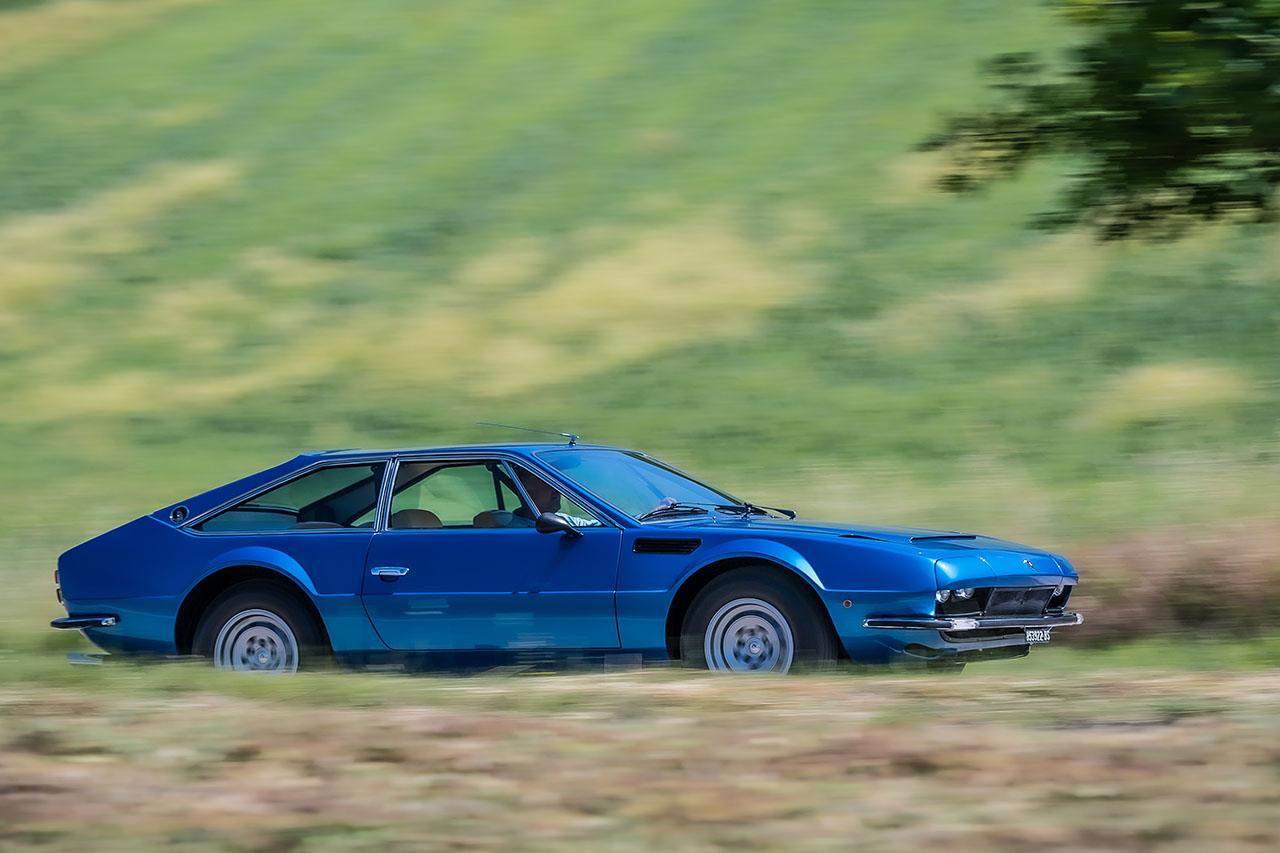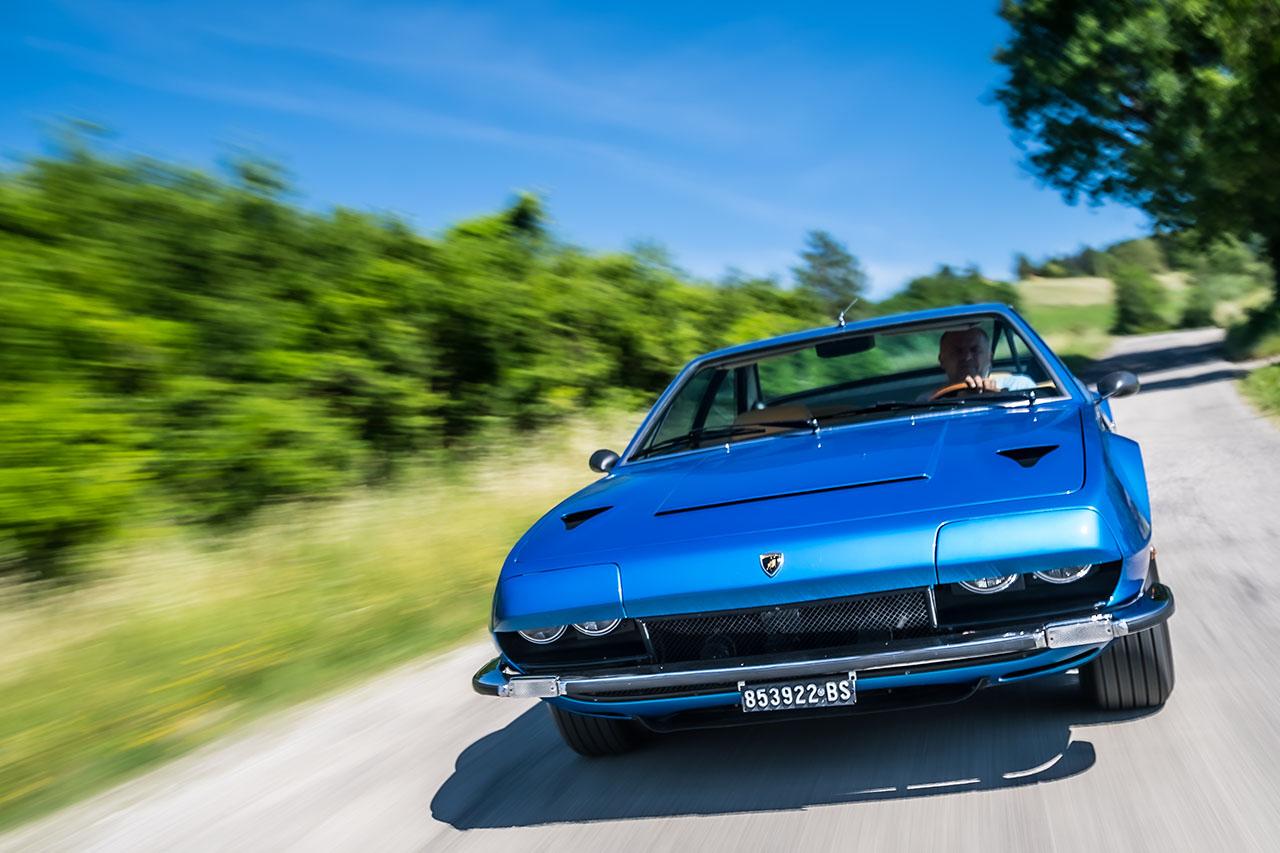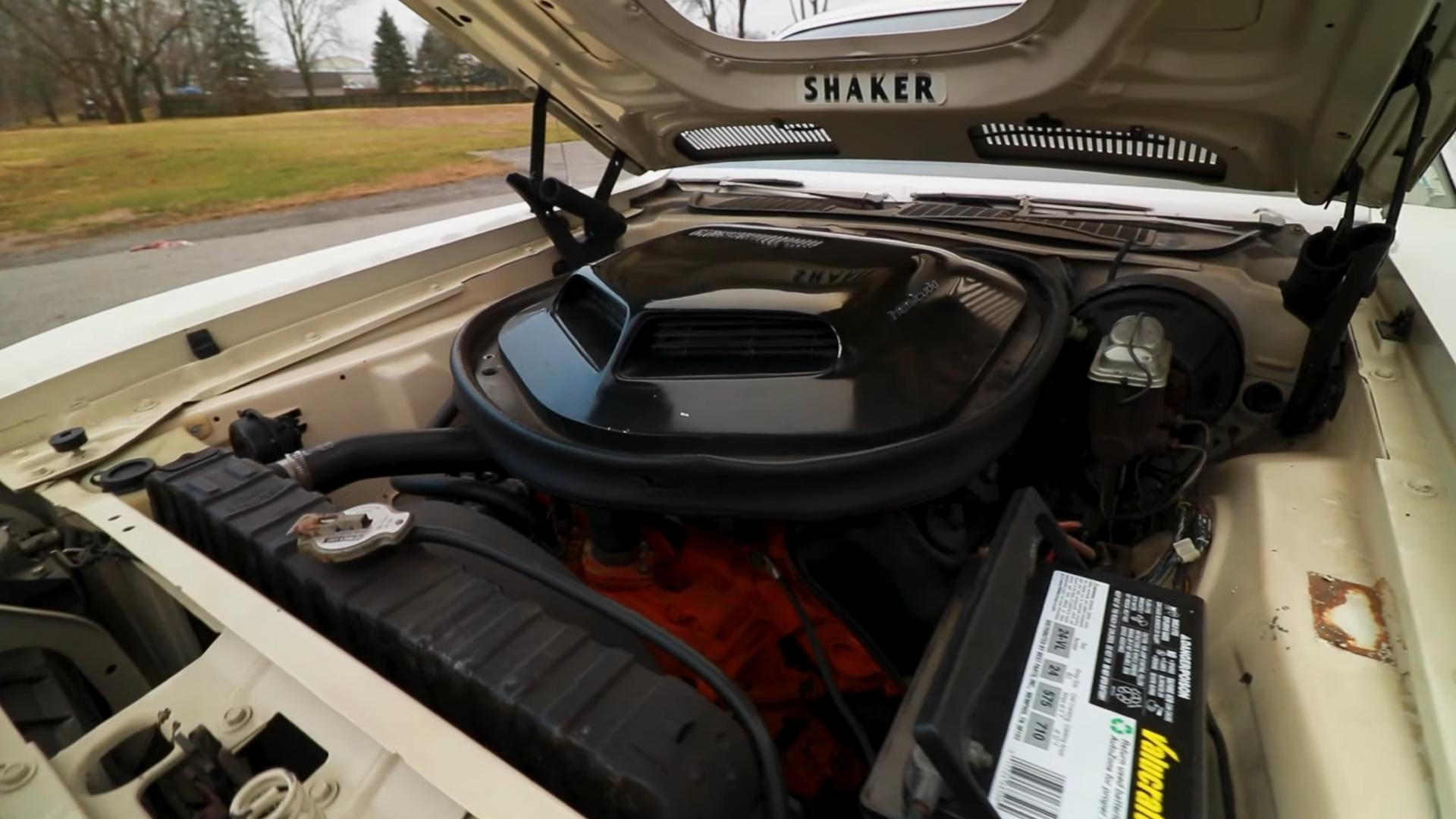The 1970s was an era defined by the music of disco, bell-bottom jeans, and the onset of the energy crisis. This was also a period of evolution for the automobile industry. Amid the plethora of cars that hit the roads during this decade, two distinct breeds stand out: the classic American muscle cars and the exotic European supercars like the Lamborghini Jarama.
Origins and Philosophy
Muscle Cars

The term’ muscle car’ is typically used to describe American-made, high-performance vehicles primarily built for street use and occasional drag racing. They were characterized by their large V8 engines, affordability, and simple mechanical designs. Popular models from the ’70s included the 1970 Plymouth Hemi’ Cuda, Chevrolet Chevelle SS, Plymouth Road Runner, and Ford Mustang Mach 1.
European supercars and Grand tourers

In the 1970s, Europe too bore witness to the evolution of some of its most iconic supercars, each capturing the imagination of automobile enthusiasts around the globe. Italy was at the forefront with the Lamborghini Countach, which set the gold standard with its dramatic wedge-shaped design, scissor doors, and formidable V12 engine. Alongside it was the often overlooked Lamborghini Jarama, a grand tourer with a potent V12, combining the brand’s distinctive design with a more traditional coupe layout. Ferrari presented its own masterpiece with the Berlinetta Boxer, an engineering marvel renowned for its performance.
Meanwhile, Germany unveiled the Porsche 911 Turbo, introducing turbocharging to the series and establishing a legend that merged innovation with sheer velocity. These vehicles collectively defined the era, showcasing European automakers’ unmatched skill in melding aesthetics, pioneering engineering, and heart-pounding performance.
With that in mind, let’s delve into a comprehensive comparison of the 1970 Lamborghini Jarama and the 1970 Plymouth Hemi ‘Cuda
American Muscle Car Vs Lamborghini: 1970 Lamborghini Jarama Vs 1970 Plymouth Hemi’ Cuda
Two models stand out in the rich tapestry of cars this era yielded – the suave European masterpiece Lamborghini Jarama and the audacious American juggernaut, the 1970 Plymouth Hemi’ Cuda.
Hailing from contrasting cultures, each car embodies its homeland’s spirit. Let’s venture deeper into their narratives.
1970 Lamborghini Jarama Vs 1970 Plymouth Hemi’ Cuda: Design Comparison
Quick Summary: The Lamborghini Jarama, designed by Marcello Gandini for Bertone, captures the essence of Italian sophistication with its pop-up headlights, elongated hood, and 15-inch Campagnolo alloys. It’s a sleek and low vehicle with a European flair.
On the other hand, the 1970 Plymouth Hemi’ Cuda embodies the boldness of the American dream. It boasts large round headlights, a distinctive ‘shaker’ air intake on the hood, and its 15-inch rallye wheels. While both cars have a unique charm, the Jarama leans more towards elegance, and the ‘Cuda emphasizes raw power and assertiveness.
Lamborghini Jarama

Marcello Gandini, working for Bertone then, drew up the Jarama with that classic Italian touch. The Jarama was a low-slung car with sharp and clean lines, which was the highlight of many European cars. The car’s specialty was the pop-up headlights, which were a big thing back then, and thanks to Bertone, they fit neatly at the front profile, while the elongated hood suggests power but with restraint.
The Italian tourer’s 15-inch Campagnolo alloy perfectly complements its stance towards the side profile, giving it a poised yet aggressive road presence.
Transition to the rear, and the Jarama continues its tale of sophistication. Compact, emphasizing the car’s wide stance, the rear integrates rectangular taillights that complement both style and functionality.
1970 Plymouth Hemi’ Cuda

The Hemi’ Cuda is a raw representation of the American dream on wheels. Its design shouts boldness from every angle. The large, circular headlights and a broad, assertive grille tell of its intent even at a glance. The car’s hood design is legendary in muscle circles – with its unique ‘shaker’ air intake was both a design and performance feature, hinting at the beast lurking beneath.
Then there are the 15-inch Rallye wheels, adding to its unmistakable muscle car stance towards the side profile. As for its rear, the ‘Cuda goes all out with pronounced wheel arches, a simplistic bumper that doesn’t steal from the design narrative, and those dual exhausts, which aren’t just there for aesthetics; they are the voice of the monster within.
1970 Lamborghini Jarama Vs 1970 Plymouth Hemi’ Cuda: Interior Comparison
Quick summary: The 1970 Lamborghini Jarama and the 1970 Plymouth Hemi’ Cuda present contrasting interior worlds. The Jarama, an epitome of Italian luxury, boasts a 2+2 seating layout, rich leather complemented by wooden accents, and a complex dashboard with technological features.
On the other hand, the American Hemi’ Cuda exudes a sense of purpose with its seating for five, a straightforward dashboard design, and an iconic pistol-grip shifter emphasizing its performance lineage. While both vehicles have limited rear space, the Jarama prides itself on luxury additions like a sophisticated sound system and power windows, whereas the ‘Cuda offers a simple AM radio and optional air conditioning.
Lamborghini Jarama

Stepping into the Jarama is like entering a realm of Italian luxury. With its 2+2 seating arrangement, the car hints at room for four, although the rear seats are best suited for shorter trips or kids. The lush leather upholstery, lavishly spread throughout the cabin, pairs beautifully with intricate wooden accents, showcasing Lamborghini’s legendary craftsmanship. The dashboard is a complex dance of dials, switches, and toggles, spotlighting the car’s cutting-edge features.
Although its sound system might seem basic by today’s standards, it satisfies the discerning listener. With amenities like power windows and efficient air conditioning, the Jarama proudly positions itself as a premier grand tourer. And if you’re wondering about storage, it offers enough space for that weekend escape.
1970 Plymouth Hemi’ Cuda

Inside the Hemi’ Cuda, there’s an unmistakable American spirit. Rather than dripping with luxury, it radiates raw purpose. The front bucket seats, combined with the bench-style rear seat, allow for five passengers, although, much like the Jarama, it’s a snug fit in the back. The dashboard starkly contrasts its Italian counterpart: it’s straightforward and no-nonsense, highlighted by the iconic pistol-grip shifter that nods to its performance heritage.
An AM radio delivers the tunes, and while air conditioning was available, it was sometimes standard. And when it comes to cargo space? The ‘Cuda boasts a surprisingly roomy trunk for a muscle car, underscoring its adaptability.
1970 Lamborghini Jarama Vs 1970 Plymouth Hemi’ Cuda: Drivetrain and Performance Comparison
Quick summary: The Lamborghini Jarama and the 1970 Plymouth Hemi’ Cuda offer unparalleled driving experiences but differ notably in their engineering and performance. The Jarama boasts a 3.9L V12 engine paired with a 5-speed manual transmission, achieving a top speed of 162 mph and reaching 0-60 mph in 7 seconds. In contrast, the ‘Cuda is powered by the iconic 7.0L Hemi V8 and offers a 4-speed manual and a 3-speed TorqueFlite automatic transmission. Its top speed is 137 mph, but it sprints from 0-60 mph in a swifter 5.6 seconds.
Lamborghini Jarama

Powering this Italian beauty is an engine that’s nothing short of an engineering marvel – a 3.9L V12. Naturally aspirated, this beast churns out 350 hp and 289 lb-ft of torque. But it’s not just about raw numbers. Those 12 cylinders, harmoniously firing, produce an orchestra that’s music to any car enthusiast’s ears. Paired with a 5-speed manual transmission, driving the Jarama was an experience – a blend of raw power and refined delivery. Its GT credentials are further highlighted by its top speed of 162 mph and the ability to sprint from 0-60 mph in 7 seconds.
1970 Plymouth Hemi’ Cuda

At the heart of the ‘Cuda lies its crown jewel – the 7.0L Hemi V8. A name that resonates with reverence in muscle car circles, this engine was a titan. Boasting 425 hp and an earth-moving 490 lb-ft of torque, this engine didn’t just propel the car forward; it made a statement. The Hemi could be mated to either a 4-speed manual or a 3-speed TorqueFlite automatic transmission, catering to purists and those who preferred a more relaxed drive.
Performance figures? A top speed of 137 mph and a 0-60 mph time of just 5.6 seconds. But with the ‘Cuda, it’s not just about the figures; it’s about the emotion, the raw, unadulterated power that courses through when that engine roars to life.
Specification
| Specification | 1970 Lamborghini Jarama | 1970 Plymouth Hemi ‘Cuda |
|---|---|---|
| Powertrain | 4.0 L V12 | 7.0 L Hemi V8 |
| Power | 350 hp (approx.) | 425 hp |
| Torque | 290 lb-ft (approx.) | 490 lb-ft |
| Transmission | 5-speed manual | 4-speed manual/3-speed TorqueFlite automatic |
| 0-60 mph acceleration time | 7.0 seconds (approx.) | 5.8 seconds |
| Top speed | 150 mph (approx.) | 137 mph (approx.) |
| Pricing | (original price or current value?) | (original price or current value?) |
1970 Lamborghini Jarama Vs 1970 Plymouth Hemi’ Cuda: Ride and Handling Comparison
Quick summary: The Lamborghini Jarama and the 1970 Plymouth Hemi’ Cuda offer contrasting driving experiences shaped by their origins and design philosophies. With its European engineering, the Jarama boasts an independent double-wishbone suspension, promoting both comfort and agility, coupled with advanced ventilated disc brakes on both ends.
In contrast, the American-born Cuda is defined by its raw power, using a combination of front torsion bar, rear leaf spring suspension, and a mix of front disc and rear drum brakes. While the Jarama’s compact wheelbase lends agility, the ‘Cuda’s longer wheelbase, emphasizing straight-line performance, offers a distinct, robust driving sensation on open roads.
Lamborghini Jarama

As a Lamborghini, the Jarama faced the significant challenge of blending a GT’s comfort with a sports car’s agility. This balance was evident in its chassis and suspension design. To manage its power and weight, the Jarama featured an independent double-wishbone suspension at each corner, celebrated for striking a balance between straight-line comfort and cornering agility. Coil springs, telescopic shock absorbers, and anti-roll bars delivered a ride that was sturdy yet smooth.
The Jarama boasted ventilated disc brakes up front and rear, which were considered advanced for its era. These brakes excelled at dissipating heat, which is essential for high-speed stops. Though exact brake dimensions for the Jarama remain uncertain, given the car’s performance and weight, they were likely significant. However, it’s worth noting that the Jarama, in line with many cars of its time, didn’t have modern safety features like ABS or EBD. Thus, effective braking demands a driver’s expertise, especially under challenging conditions.
In handling, the Jarama’s compact wheelbase (for a GT) and broad track gave it unexpected agility. Its hydraulic steering, devoid of today’s electronic assists, was responsive and weighty, particularly at high speeds, offering drivers a genuine feel of the road and the car’s subtle responses.
1970 Plymouth Hemi’ Cuda

The ‘Cuda was a distinct animal. Birthed in the American muscle age, it emphasized straight-line thrust over nimble cornering. Still, it wasn’t lacking in the handling domain. The ‘Cuda employed a front torsion bar and a rear leaf spring suspension. Though not as sophisticated as the Jarama’s system, it was robust, fitting the ‘Cuda’s persona, resulting in an assertive ride, occasionally on the harsh side, embodying its raw driving essence.
The ‘Cuda’s brakes consisted of sizable front discs and rear drums, a common combo for American cars back then. These brakes were proportional to its mighty power, ensuring it halted when needed. However, like the Jarama, the ‘Cuda missed out on modern braking tech like ABS and EBD. Braking efficiently, particularly at high velocities, demanded a driver’s intuition and sharp reflexes.
When it came to maneuvering, the ‘Cuda, with its extended wheelbase and bulk, couldn’t match the agility of its European counterparts. Yet, it was still a joy to drive. It’s hydraulic steering, dense and immediate, granted a real road connection. It wasn’t designed for tight bends, but the’ Cuda truly shined on expansive stretches with elongated curves. With rear-wheel drive and tremendous torque, a hint of oversteer was just a throttle nudge away, adding excitement—or a jolt of adrenaline, based on one’s skill.
In summary, the Jarama and ‘Cuda presented unique driving pleasures. With its refined European craftsmanship, the Jarama was chosen for the sophisticated, blending elegance and athleticism. Conversely, the ‘Cuda was a roaring powerhouse, bold and assertive, demanding reverence and adept handling. Each car is a testament to their era, marking distinct chapters in automotive lore.
Pricing
The price tag of the Lamborghini Jarama in 1970 hovered around $25,000, a considerable sum given the era, and positioned it as a car for the well-heeled enthusiast.
In contrast, the 1970 Plymouth Hemi’ Cuda, an American muscle car renowned for its powerful 426 Hemi engine, had a starting price of approximately $3,500. The Hemi’ Cuda was aimed at a different market segment altogether — those desiring raw power at a more affordable cost. Adjusted for inflation, the Jarama’s price would be equivalent to around $160,000 in today’s dollars, while the Hemi’ Cuda’s starting price would be roughly $22,000.
This stark difference in pricing underscores the diverse markets and brand philosophies the two cars catered to.
American Muscle Car Vs Lamborghini: Conclusion

The 1970s, while marked by its distinctive cultural trends, also bore witness to a fascinating automotive rivalry. At one end, we had the elegant Lamborghini Jarama, a representation of European luxury and craftsmanship, and at the other, the 1970 Plymouth Hemi’ Cuda, an embodiment of the raw and powerful American dream. Their origins, design philosophies, and performance aspects speak volumes about the distinct characteristics that they brought to the automobile industry.
From a customer perspective, the enduring allure of these vehicles is easy to understand. The Lamborghini Jarama caters to those who seek a blend of luxury and performance, an expression of opulence, and the artistry of European design. In contrast, the ‘Cuda remains an iconic symbol of American might and audacity, a car for those who value power, assertiveness, and the very essence of muscle.
Despite their age, these cars continue to captivate enthusiasts today because they are not just vehicles – they are experiences. They are time capsules, capturing the zeitgeist of the 1970s, representing contrasting worlds yet united by a shared spirit of innovation and passion. Their sustained popularity underscores a universal truth: genuine artistry, whether in design, performance, or sheer charisma, is timeless. The Lamborghini Jarama and the Plymouth Hemi’ Cuda are perfect exemplars of this, reminding us of an era when cars were more than just modes of transport – they were statements.



